Does midwinter make you want to eat all the food in your fridge, curl up in a duvet and sleep until spring? You're not alone, many plants and animals feel the same way, but you might not be so keen when we tell you just what it would do to your body! Snuggle down as we explore the world of hibernation and how it might be used to help humans. Plus, in the news: detoxing debunked and the miracle of the microbiome.
In this episode
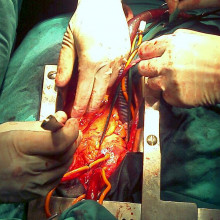
01:00 - Will you wake up during an operation?
Will you wake up during an operation?
with Srivas Chennu, University of Cambridge
Patients often say that one of their worst nightmares when undergoing surgery is that they might wake up in the middle of their operation. And, scarily enough, it does happen. But now scientists at Cambridge University have discovered a unique brainwave pattern that can signal when a person has been effectively anaesthetised, which should, they say, make surgery safer. Chris Smith spoke to Srivas Chennu who is leading the project... 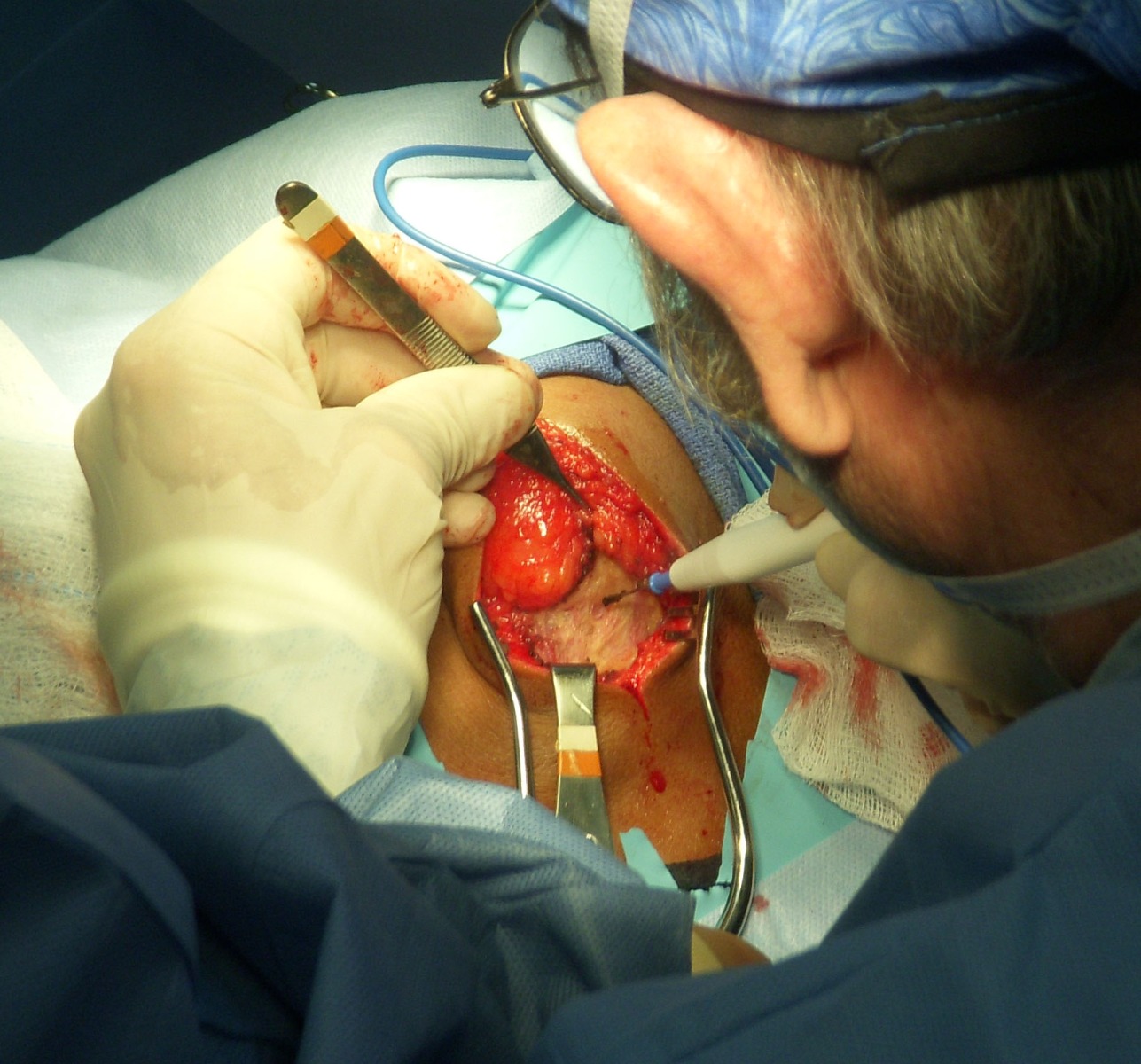
Srivas - There are 60,000 surgeries done in the United States alone every day. Right, now the challenge doctors face is how much drug to give somebody to to put them under and how do you know that they are actually unconscious before you actually cut them open. While doctors are pretty good at solving that problem, one or two of every thousand people report having woken up during surgery. Now that doesn't seem like a lot, but if you add up the numbers, it's 20-30,000 people every year.
Chris - It's also a pretty big deal for the person who wakes up.
Srivas - Absolutely. It's a very traumatic, very terrifying experience; this is the number one thing that people report after surgery as having caused them traumatic distress. Not the actual operation itself, not the fact that they were cut open, but the fact that they were aware of what was going on. They really don't like that and we'd like to prevent that, as scientists and as doctors.
Chris - Why is that such a hard nut to crack? Why doesn't an anaesthetist have a simple test they can do that tells them this person is asleep?
Srivas - That's a really good question. It's basically asking, why don't we have a test for consciousness. Now, this exactly what we'd all like to have; a test of the level of consciousness just like you have a test for the level of blood pressure. In the current situation, doctors don't have that, so they do very simple things like measuring blood pressure or measuring,sort of, the movement that a person has before deciding - this person's unconscious,we can proceed with surgery. So they're using indirect measures, but what we'd like to do is go ask the brain how conscious it is and then decide whether somebody's ready for surgery or not.
Chris - How did you do that?
Srivas - So what we did here is to use a measure called EEG, which stands for Electroencephalography. So what we do is basically put these little electrodes on the scalp of a person who is being anaesthetised. It's completely painless, completely non-invasive; they don't really feel it and it measure tiny electrical currents that the brain's producing all the time, and it gives us a couple of key signatures that tells us how conscious the brain is.
Chris - Right. So, I guess what you're saying is you take somebody, you measure those signatures when they're awake, you put them to sleep. You know they were asleep because you can ask them later, but you can see how those signatures changed when they were saying - well not saying, they were awake or not and that means you've then got a sort of EEG signature of unconsciousness.
Srivas - Yes, and we went further. What we did was while we measured the EEG, we got an object of measure of how aware they were and got them to press a button when they heard a 'bing' and another button when they heard a 'bong' - just so that we know they were responsive. We also measured the amount of sedatives and anesthetic in their blood so that we can say, okay what in the EEG, what in the brain links to the amount of drug in the blood, and what in the EEG links to the fact that this person says they're aware. So we can link the two to find out what other useful signatures in the brain then link to the fact that people say they're aware and, when does that stops, when do they become aware.
Chris - Anaesthetists often say, there's a really big difference between individuals. They might give you just a whiff of a drug, you'd be out like a light. I might take the amount it would take to knock out an elephant; we're both similarly statured people. Did you see that sort of relationship that there was a tiny amount of drug needed in some people people to induce the same state of unconsciousness compared with others?
Srivas - That was a fascinating bit of our data. What we did was we gave people just enough drug to put them on the cusp of consciousness that allowed us to basically find people, some of whom were given a particular level of drug were completely under and others, with the same level of drug, were fully alert, fully responsive. We don't know why this is the case, but our data gives us clue because what is suggests is that the way the brain activity looks like before they get the drug seems to affect who is going to go under and who isn't, and that's a fascinating insight for now applying this idea to being able to figure out how much of the drug to give somebody to make sure they're under.
Chris - Right. So not only is this potentially a monitoring tool for making sure someone is asleep and they're staying asleep, but also it could be used predictively; how much drug am I likely to need to give this person to get them off in the first place?
Srivas - Exactly. Currently what is done in modern clinical settings is they have a thing like a 'marsh model', as it's called where they take your body weight and you body mass and say they have some internal model to calculate how much drug you need. Clearly, the model doesn't do the job every time. What we'd like to do is enhance these sort of models to bring in the brain and say well based on this person's brain, this is how much drug they would need to make sure they were under for surgery.
Chris - You only looked here at a small number of people; this is just a preliminary test. Surely you're looking at healthy, fit individuals. What about those people who wake up on the theatre table. Would it not know be appropriate now to go and find who they are and see if you can get the similar sorts of tests and then see what your brain EEG measures would predict about them?
Srivas - Absolutely. I think this is exactly the next step. This study is very much a science study you know, we don't actually go the clinic yet, but the next step would be to try and make some sort of device that we can trial in that context because there, you are talking about people who are no longer healthy, who already have chronic conditions. In those cases, you really don't want to risk overdosing such people so, what we try to do, is exactly that; try to take this to the operating theatre and see how well it can perform in the real world.

06:52 - Detoxing debunked
Detoxing debunked
with Dr Kat Arney, The Naked Scientists
Kat Arney is settling down with some herbal tea and a stick of celery to bust a common mythconception at this time of the year...
Kat - I'm sure that your Christmas and new year was just like mine - a model of restraint, packed full of healthy steamed veg, lean protein, plenty of water and lots of bracing exercise... Oh, who am I kidding? I've eaten and drunk so much that if you cut me I'd bleed port and gravy.
Luckily the internet and other media are full of people offering - or rather selling - advice and products to help us all 'detox' after the festive season. The shelves of health food shops and pharmacies groan with the post-Christmas bulge of detox stuff, from pills, teabags, smoothies and potions to shampoos, colour-changing footpads, and even hair straighteners. But what exactly is 'detoxing', and does it actually do anything?
Well, for a start, there is a valid medical definition of 'detoxing' - it's one that involves being in hospital after an acute episode of drug, alcohol or other type of poisoning and having urgent medical treatment. Not sipping on a carrot smoothie because you feel a bit run-down and hungover after the party season.
Many so-called 'detox' regimes involve things like fasting for short periods of time, eating only fruit and veg or other limited diets, cutting out certain foods like wheat, dairy, caffeine and alcohol, and taking certain pills and potions to help 'flush out' the 'toxins' from your body. I guess it all sounds kind of sciencey, but the detox peddlers can't actually provide any solid evidence at all for what these mysterious 'toxins' might actually be, or how their regimes and products help to get rid of them.
Furthermore, severe low-calorie 'detox' diets may help you lose weight in the very short term - which is mostly water, due to your body having to metabolise water-storing energy-rich molecules like glycogen to keep you alive. Unlike a slower, steadier calorie-controlled weight loss plan, crash detox diets are likely to leave you feeling sick, headachey, dehydrated, weak and cranky. It's not the 'toxins leaving your body' - you're starving yourself.
The key thing to know is this: your body does an amazing job of detoxifying itself, all day, every day. If your body really accumulated large amounts of what the scientific world classes as toxins, then you'd start to feel very ill very fast and need urgent medical attention.
The liver does a sterling job of getting rid of toxic substances without the need for a helping hand - it's packed full of enzymes that convert nasty chemicals into less harmful ones, and then pass them on into the kidneys or gut to be peed and pooped out. Your kidneys are also hard at work sifting out nasty stuff from the bloodstream and sending it to be flushed down the loo. And your lymphatic system - that's your lymph vessels, lymph nodes and spleen - are quite happy getting on with the job of filtering out foreign muck like bacteria and viruses, without the need for 'stimulation' from unproven detox products.
The detox industry also seems to have a woeful lack of actual chemistry knowledge. For example, fruits like apples contain very small amounts of the chemical formaldehyde, while veg such as broccoli contain traces of cyanide, both of which are toxic in high doses. So why don't the detox fans class these as toxins, eh? Incidentally, this is why it's also a good reason not to go overboard with the superfood smoothies, as you could be taking in much higher amounts of naturally-occurring plant-based chemicals than you'd normally need, with unknown effects.
The dose makes the poison of course, but all the foods we eat contain a wide range of all kinds of chemicals that can potentially harm us in high enough doses, whether that's a chunky chocolate bar from the corner shop or the freshest organic apple straight from the field.
And in some cases herbal detox products may contain chemicals that act as drugs on the body, yet these aren't tested or regulated in the same way that equivalent pharmaceutical products would be, and also have a risk of unwanted interactions with any conventional medications that a person might be taking.
So, what should you do if, like me, you've consumed so much your bloodstream is now 90 per cent gin or you feel like you've actually turned into a pig in a blanket after eating so many?
According to real science - from clinically-trained registered dietitians rather than internet nutritionists - if you've overindulged over the festive season and want to get back on a healthier track, the best things to do are the usual boring stuff we all know about, deep down: Cut back on the booze and cakes, drink enough water to get you hydrated, get some physical activity in your life, eat a healthy balanced diet with lots of fruit, veg, fibre and some lean protein, and get plenty of sleep.
If you manage to do that, you'll more than likely lose weight and feel a lot better without any need for fancy, expensive detox products. Now, if only I could turn that into a multi-million selling diet book, I'd make a fortune!
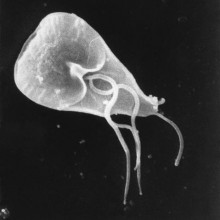
11:57 - Faeces-friendly fibre
Faeces-friendly fibre
with Dr Erica Sonnenburg, Stanford Medical School, Professor Tim Spector, Kings College London
Your microbiome: that's the word that refers to the hoards of bacteria that live in and on you, and it's extremely important. These bugs affect your health and even your personality. However, in the western world we're missing some diversity. Compared to traditional, non-industrialised tribes and populations we have about a third fewer species of microbe living in our intestines. Theories why range from antibiotics use to cleaner living; but a new study this week has provided evidence that it is at least, in part, down to our diet. Georgia Mills has been shedding some light where the sun doesn't usually shine, beginning with the study's co-author Erica Sonnenberg, who's from Stanford Medical School...
Erica - In our study we really wanted to look at the effect of diet and particularly dietary fibre. If you look at these traditional populations, they consume an amount of dietary fibre that far surpasses what we consume in the west; something like almost ten times as much, and we know that dietary fibre are really the major currency within our gut. This is the food our bacteria use to become more abundant in the gut and so we wondered, if you starve your microbes of dietary fibre, what does that mean for that community and we think this may be potentially one of the reasons why our microbiota is so much less diverse than what we see in these high fibre eating traditional populations.
Georgia - How did you test this theory?
Erica - Basically, what we did is we had a group of mice that we colonised with a human microbiota, and then we divided those mice into two groups: one that we fed a high fibre diet and the other group that we fed a low fibre diet. And what we found was that the mice on the low fibre diet, the diversity of bacteria in their gut dropped pretty dramatically while they were on the low fibre diet. We bred them for an additional four generations and what we found was that with each generation, there was a further loss of microbial diversity within the gut of these mice to the point that by the time we got the fourth generation, there were quite a few species of bacteria that were now no longer present in the gut of those mice.
Georgia - What's more, putting the mice back on this high fibre diet doesn't result in those extinct bacteria species coming back; it looks like once they're gone, they're gone. But is this really a big deal...
Erica - We know that an acute drop in diversity, say from taking a round of antibiotics, opens your gut up to the potential that it would get colonised by a pathogenic bacteria. So that's, for example, C. difficile, and actually one of the most effective treatments for that is a reintroduction of microbial diversity through a fecal transplant. Long term, there have been several studies looking at the microbiota of individuals that are obese, or have metabolic syndrome, autoimmune diseases, and in all these cases their microbiota diversity is much lower than what we see in healthy populations. Now we don't know if that drop in diversity caused those diseases or is contributing to them, but it does indicate that there's some connection potentially between a low diversity microbiota and many of our western diseases that are rising so rapidly.
Georgia - If this does turn out to be a problem, what about those fecal transplants Erica mentioned. This procedure which involves taking 'poo' from a healthy person and putting it into an ill person to restore their microbiota is now used in many countries across the world. Tim Spector is the Professor of Genetic Epidemiology at King's College London and the author of "The Diet Myth"; he's been on the show before to tell us about fecal transplants.
Tim - There's usually several ways of doing these transplants; traditionally it was though a tube through your nose, where you put the liquidised poo, essentially, down the nose into the small intestine, or you could pass a tube up through your bottom - given as an enema.
Georgia - If having a 'poo' filled tube up your bottom or your nose doesn't sound like your 'cup of tea,' using capsules of frozen specimens could be the solution. There was some debate about whether this would work but, research this week from McMaster University in Canada, has shown that transplants can, indeed, work after the bacteria has been frozen - as Tim explained...
Tim - This was a study of over 200 people and they randomised them to frozen samples or the fresh samples and, essentially, found no difference between the two methods. So, it looks like the good news is that you can store these samples for a long time, as long as you store them well they seem to be equally effective, and the evidence seems to show that the way in which you give them doesn't matter too much for severe illnesses. So you can give them by tube or by these acid resistant capsules - which some bright spark has renamed 'crapsules.'
Georgia - There have been some other, I suppose, worries or concerns about 'poo' transplants because gut bugs have such an impact on our bodies as a whole.
Tim - Exactly. So as we're discovering that our microbes are essentially key to many of our healthy processes: our immune system, our digestion, our metabolism, whether we get fat or thin and also, increasingly, our emotions so, clearly, any change you're making to the gut microbe could have other far reaching consequences. There are about two case reports now of people who have received these transplants but have ended up putting on a lot of weight afterwards and it turns out that the donor was of above average weight. There's also the other potential worry which hasn't been shown yet but in animals you can certainly transmit some mental illnesses, stress and anxiety so, if you check your donors don't end up as mass murders or psychopaths because ten years down the line it could be causing other problems.
Georgia - As Erica said earlier, our gut bugs are much less diverse in the west so could this 'transpoosion' be the answer?
Tim - A colleague of mine, Geoff Leach, whose co-founder of the American gut project is actually on a personal quest to make himself the most diverse human on the planet and has, as I explained in some detail in my book, went to Africa and picked a healthy tribesman; hunter-gatherer type from Hasded tribe, and got a donation from him and did a transplant himself using a turkey baster and he claims his diversity increased, but he hasn't yet noticed any major health benefits.
Georgia - Or I'm imagining, any health problems?
Tim - No, exactly; he's a robust Texan, so he's quite tough but, at the moment, most people think he's mad, rather than some people would say he's pioneering. But, at the moment, we don't know the side effects of whether a microbe, say from Africa, inside us is going to have the same effects. So what might be great for Africans, might actually be harmful for us.

19:08 - Super-bright supernova
Super-bright supernova
with David Bersier, Liverpool John Moores University
One of the biggest explosions astronomers have ever seen appeared recently in space, but scientists are struggling to decide what caused it. The best guess so far is that it was something called a "super-luminous supernova", which is the cataclysmic explosion produced when a large star reaches the end of its life. But the explosion this time was so powerful that it doesn't seem to fit with any of our existing theories, as David Bersier, from Liverpool John Moores University, explained to Felicity Bedford...
David - This one is just the brightest that has ever been found; something like 500 billion times the brightness of the sun. In terms of space, it's at a fairly large distance because what makes this event unique is that it's all so very rare. So, if you want to find rare objects, you also have to look at a very large chunk of universe and this object, we're talking about 3 billion light years away.
Felicity - Wow! What exactly is it that makes this star, this supernova so bright?
David - Well that's part of the problem. In a sense it's much easier to discover a supernova than to understand what makes it shine and it's so bright, so much brighter than normal supernovae that we think we understand, that for this particular event we call "Assassin 15LH," these models are really stretched because the total amount of energy that's been emitted in the first few months are really pushing the limits of what models can explain.
Felicity - So it's a challenge, but you must have some ideas?
David - We can try and speculate. Yes, there are several models around, several theories; these are superluminous supernovae; some of them are powered, in a sense, by the interaction of the matter that is ejected in the explosion with what is just lying around the star at the time of the explosion. Another possibility is, what triggers the explosion is that the core of the star, where the nuclear reactions are happening, this core collapses and forms what we call a "neutron star" and, in some cases this "neutron star" may have an enormously large magnetic field and it may be spinning very, very fast. And that is one possibility to explain the brightness of these superluminous supernovae.
Felicity - What is it that makes supernovae so interesting; why are you studying them?
David - Different types of supernovae are, essentially, responsible for a lot of what we call "the periodic table" of the elements. Very early in the universe, after a few minutes, there was just a lot of hydrogen, some helium, and very little of a few other elements, whereas supernovae make a lot of the elements; the carbon and oxygen: most of it has been made in supernovae.
Felicity - So it's something that's fairly difficult to miss. How did you detect this star?
David - This Assassin survey scans the whole sky, about every other night; using small telescopes, actually, about 14 cm telescopes. There is software to look at the images when they come in and to try and find objects that were not there before.
Felicity - Is the international nature of this project central to its success? You say you were looking at the whole night sky - that simply wouldn't be possible without the telescopes that are scattered all over the world.
David - "The sky never sleeps" - one of the principal instigators of the project puts it. He said "there's always an assassin awake"...
Felicity - There's always an assassin awake - fantastic.
David - There's always one of us awake somewhere in the world, able to do something.
Felicity - Could you draw all of this together and summarise what you found?
David - So we found this object, this extraordinary luminous supernova that beats the record at least by a factor of two in terms of brightness compared to the second brightest. Traditionally scientists are very conservative and we say - okay, this is weird, what else can it be? A bright supernova is a standard explanation but we have to make sure it's not something else and nature is not playing a trick. We think we have reasonably good arguments to rule out other explanations such as an extraordinarily massive black hole that is regularly accreting matter; there is no sign of anything like that happening. We think it's not a tidal disruption event, it's not a star that passed very close to a supermassive black hole and got ripped apart and, essentially, we are left with this explanation. It is a single star that exploded but we don't really know why it is so bright; it is really stretching current models almost to the breaking point.

24:57 - Why do we have seasons?
Why do we have seasons?
with Professor David Rothery, The Open University
Before we get to embedded in sleepy subjects it might be useful to know why we have seasons at all? Connie Orbach checked in with professor of planetary geosciences David Rothery to find out.
have seasons at all? Connie Orbach checked in with professor of planetary geosciences David Rothery to find out.
David - We have seasons because the Earth's axis is not exactly upright relative to its orbit - it's tilted at 23½ degrees. In northern hemisphere winter, the Earth's north pole is tilted away from the Sun by 23½ degrees, so the Sun is low in the sky and it isn't seen at all from near the North Pole. In northern hemisphere summer, the Earth has gone halfway round the sun but the axis is still pointing the same direction in space so the North Pole is tilted at 23½ degrees toward the Sun. So the Sun never sets there and at spring and autumn, halfway in between those two points, you've got days of equal length because the actual tilt is neither towards nor away from the Sun.
Connie - So, let me get this right. The tilt's staying in the same direction but, as it's orbiting the Sun, that tilt is, in some places, directed away from the Sun and in other places directed towards it.
David - And it's a mirror image between north and south hemispheres. When we've got summer in the northern hemisphere, it's winter in the southern hemisphere.
Connie - And so, does that tilt ever change?
David - The tilt does change - we think over about 41,000 years it changes slowly between about 22 and about 24½ degrees. It's a very slow, very slight change in the tilt, which means that over geologic time, seasons have been pretty much the same.
Connie - Do other planets have this tilt of their poles or is it just us?
David - No - we're not the only planet. Mercury has none; its axis is exactly 90 degrees to its orbit but Mars has a tilt that's 22.5 degrees at the moment - it has seasons and we think Mars' axis wobbles rather more extremely than the Earth's, and it's possible that Mars' axis wobbles by more than Earth's because Earth's axial tilt is stabilized with the presence of a large moon.
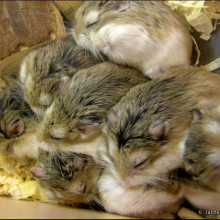
27:15 - How hibernation happens
How hibernation happens
with Professor Francis Ebling, University of Nottingham
We've all heard of the bear who sleeps through winter or the bird that migrates to warmer climates, but how do they know when the time is right? Francis Ebling is Professor of Neuroendocrinology at the University of Nottingham and lets Kat in on the happenings of hibernation...
Francis - Well the key is that most organisms measure day length and night length, which provides a reliable geophysical cue, and they can use that information to regulate an internal calendar and prepare for the changing of the seasons. Animals have to prepare for winter when climatic conditions are harsh, when food supply might be limited or very unpredictable, and the most dramatic example for preparation for winter are those animals that go into hibernation which, in effect, is suspended animation. They drop their metabolic rate, the drop their body temperature.
Kat - So how are animals actually measuring this change in day length? I mean assuming they don't have a clock and go - ohh you know, nights are drawing in. How do animals who don't have clocks and calendars work out what time of year it is? You know what's going on at that kind of level?
Francis - Our understanding is that they can measure the actual hours of light and hours of darkness. So, we and other mammals perceive light through our eyes, but it's not the rods and cones that people might have heard of as our normal cells that measure light and help us see colour in black and white. It's a set of special cells at the front of the ganglion that measure light intensity and the duration of the day and they use that information to signal to our pineal gland, and the pineal gland secretes a hormone, melatonin, but just at night. So, as the length of the night gets longer in autumn as winter approaches, the duration of melatonin secretion increases and that, in turn, signals to the pituitary gland at the base of the brain, and to the hypothalamus just above the pituitary gland, and it's that part of the brain that controls body temperature, controls reproduction, controls food intake and fat intake and fattening.
Kat - We know about animals like bears and things like that, that go into hibernation in the winter, and I certainly feel right now like crawling back under my duvet, but humans don't seem this hibernation - you know kind of wanting to bed down for the winter - do we?
Francis - Well, humans probably evolved as tropical apes in equatorial regions but we are very much aware of the changing seasons. For some people, that impacts upon their moods such that they develop 'seasonal affective disorder,' a form of depression in winter, but it's a very interesting form of depression in that they tend to sleep more and eat more, particularly carbohydrates and fats, which is atypical for other forms of depression. So, we are subliminally aware of the seasons and it affects some of us more than others.
Kat - How are you studying these processes of seasonal change and hibernation?
Francis - My laboratory at the University of Nottingham is funded by the Biology and Biotechnology Research Council, specifically to understand how it is that some animals prepare for winter by reducing their appetite and increasing the way that they burn the fat reserves they've stored. So we study these in Siberian hamsters: these hamsters show a form of hibernation called "torpor" where they drop their metabolic rate, and their heart rate, and their breathing rate for just part of each day, but in addition to that, they spontaneously reduce the amount that they eat. And they've evolved that strategy because, of course, in winter there are limited food supplies and, instead, they survive winter, keep the body going, by burning huge amounts of abdominal fat that they've stored over the summer in anticipation of winter.
Kat - And very briefly, what can we learn from your work about maybe how other animals, and maybe even humans, respond to winter or just regulate our metabolism generally?
Francis - I think the important thing from our work is that is shows that the mammalian brain is capable of spontaneously reducing our motivation to eat and our appetite, and capable of increasing the way we burn fat. So, if we could understand those mechanisms, then potentially we have some new targets that the pharmaceutical industry and the health service can look as potential targets to help us lose weight and be healthier.

32:15 - Plants hibernate too!
Plants hibernate too!
with Dr Philip Wigge, University of Cambridge
Had you just awoken from an extra-long, grizzly bear-like hibernation, you would be forgiven for thinking that it was spring time in the UK: daffodils blooming and buds on trees are not usually associated with the depths of winter. Like animals, plants have also adapted to a seasonal planet but how do they do this? Connie Orbach went to the Cambridge Botanic Gardens to speak to plant scientists Dr Philip Wigge...
Philip - Plants need to know what the season is, so they measure how long the day is and that will often help them now whether it's spring, or autumn, or summer, or winter. They can use that information to plan their life cycle and make decisions about when they should flower. And the other thing they also use is temperature, and these unfortunate daffodils have really been relying and temperature information. So, we had a really warm December and, as a result of that, these daffodils probably thought it was springtime and so they've actually started to flower, and now we've got a very cold patch and the frost will probably kill these flowers.
Connie - Humans may be carb load in the winter, some animals migrate, some animals go underground or sleep. What do plants do in the year in response to temperature?
Francis - Plants can't move so they are stuck in one place, so they have to be really smart about the decisions they make. The reason for that is when you are a growing plant or making flowers, those growing structures are really sensitive to extremes of temperature, so either heat or cold. So, if you are a plant, you really need to fine tune your lifecycle so that you're growing and flowering at those times of year when the temperatures are not too high and not too low.
Connie - We don't usually think of plants being maybe able to feel or see light, or temperature. We don't think of them as sensory organisms, so how on earth are they doing this?
Philip - Yes, that's remarkable isn't it. So you often look at a plant; you might think it's sitting there rather passively but, actually, they are constantly looking and sensing the environment and they integrate that information to change gene expression, and that's what we do in our research laboratory. We try to understand the molecules that are controlling these responses of plants to the seasons.
Connie - Oh Wow! Can you show me a bit of what you're doing here?
Philip - Great, so we should maybe go over to the growth rooms where we can see some of the plants we use in our research to understand how plants grow.
Connie - That sounds great - let's go...
Keen to get into the warm, we went underground to find a series of doors, each leading to a room heated at a different temperature and all filled with plants... Now be warned all this heating can get a little noisy...
Philip - Exactly. These are the walk in chambers. So I'll open this one here...
Connie - Oh Wow! It feels so futuristic - it's really bright in here, it's quite noisy and it's got kind of a few rows of trolleys with lots of different plants on them. What have we got here?
Philip - So this a room that's kept at low temperature. If you look at these plants here, they're growing quite slowly and then these plants, by comparison, are growing very fast. So we've tricked these plants into thinking it's actually warmer than it really is, so that just shows you that by changing a single gene in the plant, we can change what season the plant thinks it's growing in, which is quite interesting.
Connie - The plants were all the same species but looked so different that you would never guess. Some were tiny and cress-like, others were huge and overflowing. This shows how important the plant's environment is to their growth pattern and, also, that if only a couple of genes are involved, the pathway for environmental responses of this kind must be really, really, specific. I had lots more questions, but all that noise isn't that great for radio so it seemed best to continue the conversation elsewhere...
We mentioned this outside, but what we saw was all those plants blooming early due to a very warm winter. What does this mean in the long run if we have a changing environment for the plants? Can they adapt it or is it something that's going to cause us problems?
Philip - Well it's very interesting; we're sort of in the middle of a huge sort of global experiment and it's caused very large changes in the behaviour of plants. What we've already seen is with a 1OC change, plants flower earlier when it gets warmer and the distribution of plants is moving. And what's very important, also, is that plants are not all responding equally; so some plants will do relatively better than other plants and so it does seem that plants that mainly use temperature to make decisions about their lifecycle, they seem to be doing better than mainly use photoperiod. And you can imagine that a plant that mainly uses the day length to determine when to flower or when to start growing, they might lose out. If you have a warm spring, other plants might come up earlier they'll compete with plants that waiting for long days when, actually, they could have started growing earlier. So wild plants have already changed and they're changing a lot.
Then on top of that you've got to think about what's going to happen to crops. On average, it's estimated that for every 1OC increase in temperature, crop yields they go down by about 10%, so that's something we've really got to watch out for.
Connie - And I guess that's something your work here will be important for in the future if we have to adapt to these changing climates?
Philip - Well, it's certainly a very interesting time to being doing this sort of research and our lab, and many labs around the world, are really interested in this question of how you identify the actual genes that are enabling the plant to sense temperature. So, if we identify these genes, then that has a great opportunity to enable us to breed plants that have a better response to warm temperature stress.
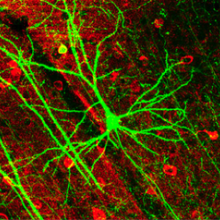
39:04 - Dismantling brain cells
Dismantling brain cells
with Giovanna Mallucci, University of Cambridge
Though the idea of a long sleep may sound pretty tempting, animals actually put themselves through an awful lot. They are continually cooling and reheating their bodies, putting huge stress on their organs, and some even make themselves diabetic. Hibernation is clearly no picnic, and things get even 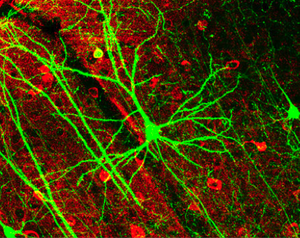 worse as, in an attempt to save energy, animals will dismantle the synapses in their brains. These are the parts of the neuron that send and receive signals and without them we're all pretty useless. But what's even more amazing is that when it's time to "wake up" they'll put them back together again, just as they were. Professor Giovanna Mallucci is a clinical neuroscientist at Cambridge University and she explains to Connie Orbach how this actually works.
worse as, in an attempt to save energy, animals will dismantle the synapses in their brains. These are the parts of the neuron that send and receive signals and without them we're all pretty useless. But what's even more amazing is that when it's time to "wake up" they'll put them back together again, just as they were. Professor Giovanna Mallucci is a clinical neuroscientist at Cambridge University and she explains to Connie Orbach how this actually works.
Giovanna - I think you've heard already from our other speakers, that there's lots of processes that slow down and are shut down for hibernation including metabolism. And one way to save energy is to stop the brain using its energy and the dismantling of synaptic connections between brain cells is a way of doing that. What happens is, on cooling there is a retraction of what we call the "dendritic arbour", you know all the connections and branches of a brain cell that's connecting to another and the actual contacts - it's like unplugging a plug from its socket, they are just removed so that no energy flows. When they rewarm there's a signal to reconnect these structures; how that exactly happens is absolutely not known and very, very interesting to us but we do know a lot about the processes that drive that regenerative capacity.
Connie - Is this happening all over the brain?
Giovanna - Yes, it's happening all over the brain and all of us all the time. So there's a balance between pruning and generation or regeneration to maintain a sort of status quo and learning and memory need new synapses and then you prune and get rid of all your excess synapses when you sleep and other conditions. But the capacity for regenerating synapses and refreshing them is part of repair and it's called "structural synaptic plasticity."
Connie - So let me just get this right. So what's happening with animals in hibernation is a much more extreme version of actually something that's happening all the time in humans and animals?
Giovanna - Correct, that's exactly right.
Connie - So how have you been using this then in your work?
Giovanna - So we know that in neurodegenerative diseases like Alzheimer's, which is the prototypical disease but also many of the others. The earliest thing that happens, before you get the brain cell degeneration, is that synapses are lost and as synapses are lost memory goes down - what we call cognitive function goes down, and it's just not clear why this is early loss of synapses which is such an important stage in these diseases, and it's important a) because it give you symptoms and b) because it's reversible. So that's the stage before the brain cells have died, before the neurons have died when, actually, if you can increase synapse number you can restore memory so it's a very attractive, targetable point of intervention. And our starting hypothesis was that the reason that synapses are lost early in Alzheimer's disease and early in Parkinson's disease and other disorders is because there's a failure of this regenerative capacity that is part of our normal structural plasticity. We used hibernation or induced laboratory hibernation in mice to test the ability of synapses to regenerate themselves in mouse neurodegeneration models.
Connie - And what did you find out - what's happening?
Giovanna - So first of all we found very interestingly that mice which don't normally hibernate, can hibernate in all the ways that you would normally expect. So if you cool them: they'll drop their body temperature, they'll dismantle their synapses and they'll go into torpor and then, when you re-warm them, they come completely back to normal again. And what we found out was that normal mice dismantle and reassemble their synapses but the mice that we used that had neurodegeneration models - that's Alzheimer type mice, and mice with prion disease - that's another neurodegenerative disease. They failed to reassemble their synapses so they could unplug the plugs but they couldn't put them back in again and this lack of degenerative capacity gives us a good idea of why there's such an early loss in synapses.
Connie - Did you get a bit deeper into this? Did you get to see the protein that's involved - is that right?
Giovanna - Yes we did. So hibernating and cooling does two things to you: it shuts down metabolism and it shuts down protein synthesis, but there's a group of proteins that are upregulated and these are called "cold-shock proteins," and they're a relatively new family of proteins. And one of these which is called "RBM3", which is RNA Binding Motif Protein 3, is highly expressed in the brain and by being upregulated during hibernation that protein keeps a number of really important critical Messenger RNAs, that you need for survival, ready to make into proteins when you wake up. And we found out that RBM3 is failing in the Alzheimer's brain, and if we put it back in, we can rescue them.
Connie - So you found this protein, RBM3 - where do you go now?
Giovanna - So, we didn't find the protein; I mean the proteins a known cold shock protein. What we've done is associate it with the failure of structural plasticity in neurodegenerative disease in Alzheimer type mouse models and what we now want to do is understand the relevance for human disease. Because what we found in the mice is that if you put the protein back in it's incredibly protective, it gives them new synapses, it stops them getting neurodegeneration, it stops them getting memory loss, and it protects them in the long term and you can do that by either cooling the mice early to boost their indodgenous or their own RBM3 levels, or by putting it in artificially. So now, obviously, this is a way in for neuroprotection for human disease but cooling itself is not realistic or practical in the long term. It is used medically; it's used in newborn babies that have had hypoxic damage; it's used in post-stroke and it's used in cardiac surgery, and in many forms of neurosurgery. So we thinks that that's acting through RBM3 and our ideal would be to be able to manipulate RBM3 levels for protection without having to cool.
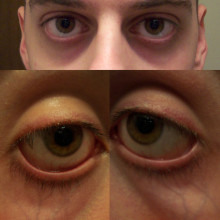
45:44 - Why do you get bags under your eyes when you're tired?
Why do you get bags under your eyes when you're tired?
Felicity Bedford enlisted Dr Sean Lanigan, president of the British Cosmetic Dermatology Group to help with this eye opener.
Sean - The eye bag area covers the lower orbital rim where the whole in the skull accommodates the eyes. The skin underneath the eyes covers muscles, fat and blood vessels. Because it is so thin, it is relatively transparent so you can see through to the tissues underneath. The main changes people notice in this area are dark circles and puffiness.
Felicity - I certainly notice dark circles in the morning. Why are some people lucky and always seem to be fresh-faced?
Sean - Dark circles are often seen in people with familial or genetic tendency to have them. How dark that area is can be to do with your skin pigments, and if you rub tired eyes you can thicken the skin and make it look puffy and darker. Another factor contributing to dark circles is blood, which is red, blue and purple pigments. These colours are seen through the skin and can change with skin thickness. The body responds to tiredness by making hormones to help boost energy levels, such as cortisol. These hormones result in more blood in the skin, enlarging blood vessels and retention of water, which all contribute to darker circles and puffiness. Lifestyle choices such as late nights, excessive alcohol and coffee consumption will all influence cortisol levels running the risk of puffy, dark eyes.
Felicity - I think I'll be going to be bed early to try and shift my dark circles now. Well, puffy eye bags don't seem to serve a purpose. Is James correct in thinking eye bags are a reliable warning of someone who's in need of a good night's sleep?
Sean - Sadly, puffy eyebags are more common as you get older as changes in elastic tissues and collagen mean the skin is less elastic and stretches. The pads of fatty tissue found in your eye socket creep downward over time. This is worse in people who've had a lot of sun exposure on their face. Whatever your age, water moves in and out of the skin through the day and night; this is helped by gravity and the heart pumping blood around. When we lie down, fluid sits in the loose eyelid skin as there's no help from gravity to move it, so eye bags are often more obvious after a night lying down, whether we sleep or not. Over time the effects of gravity will slowly cause bagginess which will be persistent.
Felicity - Thanks Sean. So James, eye bags are not always a sign that you need a nap. In fact, depending on the cause, lying down could actually make puffy eyes worse.
Our next question is from Ghayath..
Ghayath - Why do humans have such a variety of appearances?










Comments
Add a comment